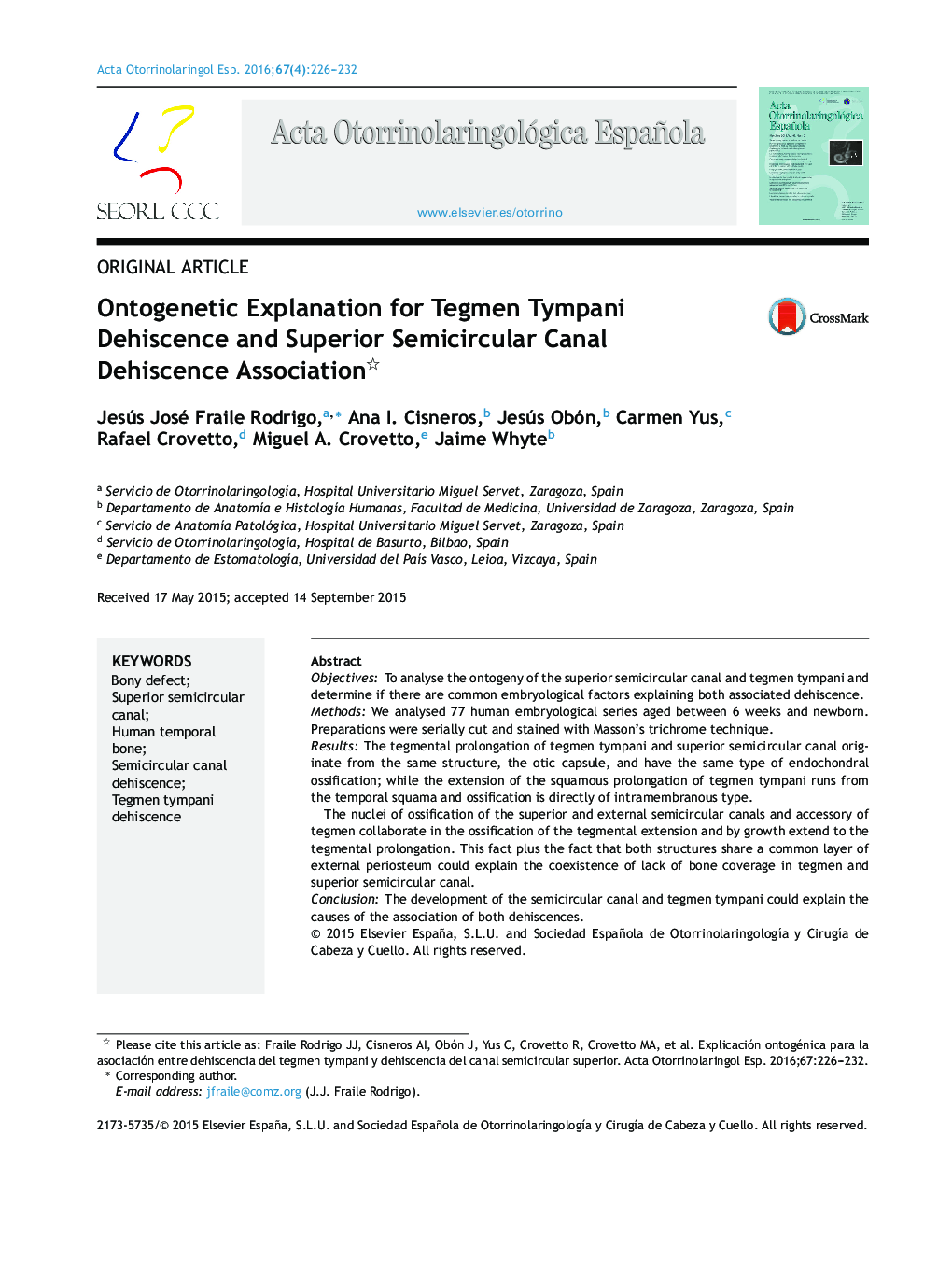| Article ID | Journal | Published Year | Pages | File Type |
|---|---|---|---|---|
| 4100568 | Acta Otorrinolaringologica (English Edition) | 2016 | 7 Pages |
ObjectivesTo analyse the ontogeny of the superior semicircular canal and tegmen tympani and determine if there are common embryological factors explaining both associated dehiscence.MethodsWe analysed 77 human embryological series aged between 6 weeks and newborn. Preparations were serially cut and stained with Masson's trichrome technique.ResultsThe tegmental prolongation of tegmen tympani and superior semicircular canal originate from the same structure, the otic capsule, and have the same type of endochondral ossification; while the extension of the squamous prolongation of tegmen tympani runs from the temporal squama and ossification is directly of intramembranous type.The nuclei of ossification of the superior and external semicircular canals and accessory of tegmen collaborate in the ossification of the tegmental extension and by growth extend to the tegmental prolongation. This fact plus the fact that both structures share a common layer of external periosteum could explain the coexistence of lack of bone coverage in tegmen and superior semicircular canal.ConclusionThe development of the semicircular canal and tegmen tympani could explain the causes of the association of both dehiscences.
ResumenObjetivosAnalizar la ontogenia del canal semicircular superior y del tegmen tympani y determinar si hay factores embriológicos comunes que expliquen la dehiscencia asociada de ambos.MétodosSe han analizado 77 series embriológicas humanas de edades comprendidas entre las 6 semanas y recién nacidos. Las preparaciones estaban cortadas en serie y teñidas con la técnica de tricrómico de Martins.ResultadosLa prolongación tegmentaria del tegmen tympani y el canal semicircular superior se originan de la misma estructura, la cápsula ótica, y poseen el mismo tipo de osificación endocondral; mientras que la prolongación escamosa del tegmen tympani se desarrolla desde la escama del temporal y su osificación es de tipo directa o intramembranosa.En la osificación de la prolongación tegmentaria colaboran los núcleos de osificación de los canales semicirculares superior, externo y accesorio del tegmen, los cuales por crecimiento se extienden hasta la prolongación tegmentaria, este hecho sumado a que ambas estructuras comparten una capa común de periostio externo podría explicar la coexistencia de falta de cobertura ósea en el tegmen y en el canal.ConclusiónEl desarrollo del canal semicircular y tegmen tympani podrían explicar las causas de la asociación de ambas dehiscencias.
